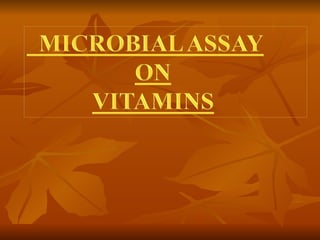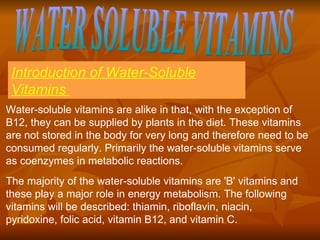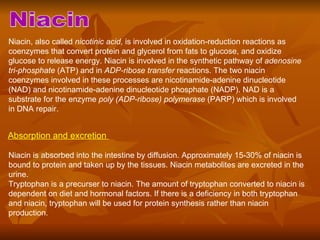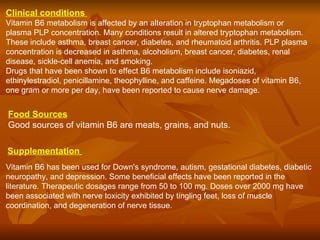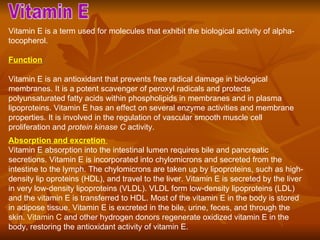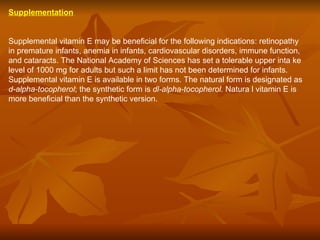This document summarizes key aspects of several water-soluble vitamins, including their functions, absorption, clinical deficiencies, food sources, and uses for supplementation. It discusses the vitamins thiamine, riboflavin, niacin, pyridoxine, folic acid, and vitamin C, describing how each acts as a coenzyme in important metabolic processes and what health issues can result from deficiencies. Food sources rich in each vitamin are also outlined, as well as therapeutic uses for supplementation.
